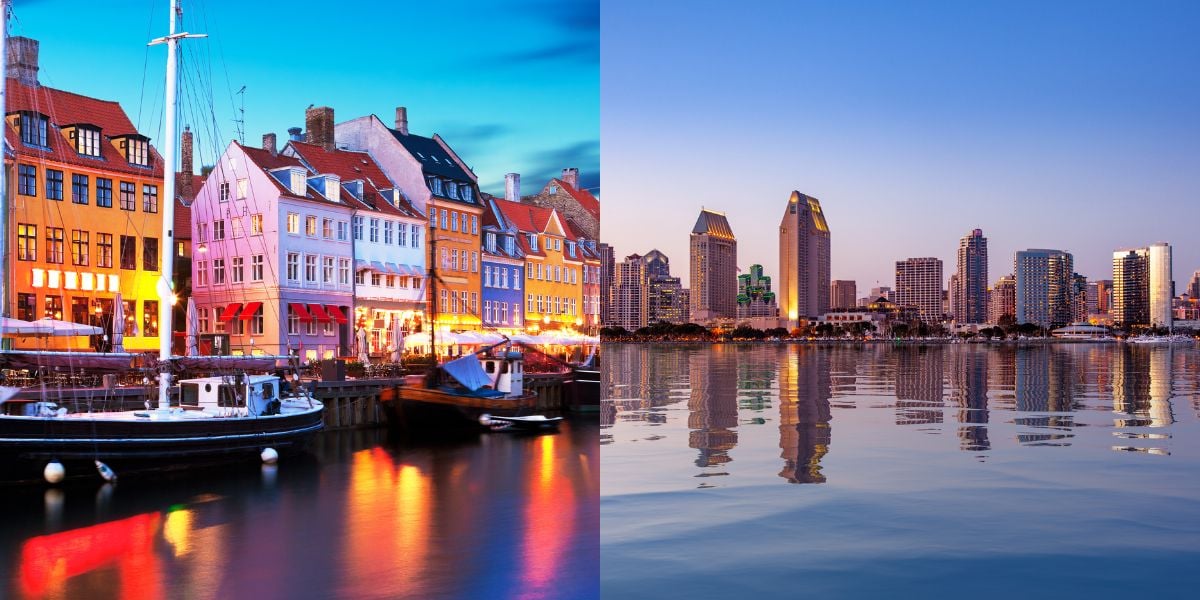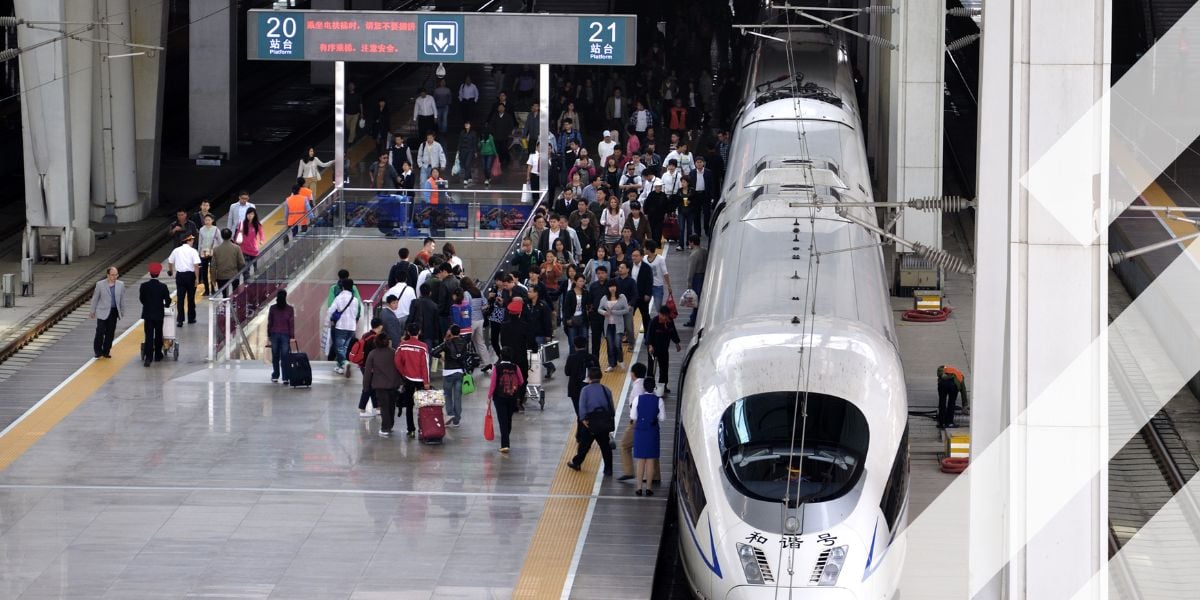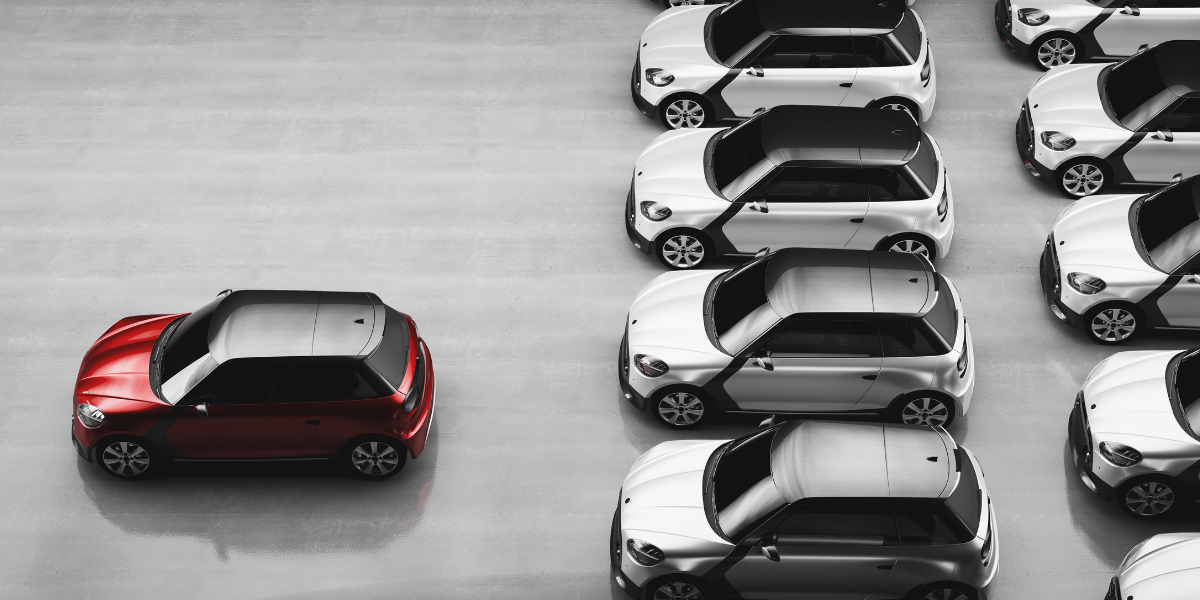MaaS as an integral element of smart mobility
Do Mobility as a Service offerings need to be standardised across Europe, or should they be as different as the countries and cities they are offered in?
Over the last decade or so the term “Mobility as a Service” or MaaS has gone from being considered as a “potential disruptor” to being one of the most commonly mentioned phrases in the smart mobility sector with a US$93 billion dollar (or Euro) market value. But what is it? What does it mean? How does it differ from country to country? And how do you pronounce “MaaS”? Intertraffic spoke with four of its leading protagonists
“Mobility-as-a-Service (MaaS) aims to make better use of the mobility assets around us. It has to be something that people can rely on regardless of where they are living, or whether they own a driver’s license or a private vehicle. That is why accessibility is a keyword in MaaS,” says Jonna Heikkinen, head of Transit Partnerships EMEA at Uber.
“Developing a mobility network based on the use of public transport and shared mobility services requires a lot of cooperation among different stakeholders,” she continues, “while also identifying different service gaps that still exist in our network.

Today, people in urban areas are well-served with mass transit and shared mobility services, but the level of service drops immediately when traveling in peri-urban or rural areas.”
The issue here is that many people in those areas are forced to rely on their own cars as they cannot complete their mobility needs without a privately owned vehicle.
Developing a mobility network based on the use of public transport and shared mobility services requires a lot of cooperation among different stakeholders, while also identifying different service gaps that still exist
“Those without a driver’s license or a car, are doing fewer trips due to a lack of proper access to public transport and often these people also experience isolation, poor access to essential services, and other problems that worsen their quality of life. To close those transport gaps in today’s MaaS ecosystems, Uber has developed tools and solutions for public transport agencies to tackle those universal challenges,” explains Heikkinen.
MEETING DEMAND
Uber’s demand-responsive transportation (DRT) model complements public transportation in lower-density areas where mass transit is expensive to produce, during late nights when mass transit services may not be running, when service disruptions occur, or as a first last mile program connecting people with key public transportation hubs.”
Compared to traditional demand-responsive transport solutions with a fixed fleet of dedicated vehicles and drivers, Heikkinen says that Uber’s non-dedicated service model delivers more flexibility and cost savings for transit agencies by removing a significant amount of upfront capital investments needed to operationalize new DRT services.
“Several transit agencies use Uber to deliver a hybrid model. In the hybrid model, they complement their existing DRT or paratransit services with Uber to extend their service areas, manage costs during low-demand hours and monitor the needed fleet size while introducing new DRT services for their local communities.”
In Texas, Uber has been working with Dallas Area Rapid Transit (DART) since 2019 to deliver complementary first last mile and DRT services. DART is a multimodal agency comprising 13 suburban and rural cities, and they partnered with Uber to provide riders with greater flexibility and more options to meet a diversity of transport needs.
Says Heikkinen: “DART’s program has grown from a couple of zones to providing Uber as a first last mile solution to connect riders to key transport hubs in 32 geofenced zones. Riders can travel anywhere within the eligible zones or to and from eligible DART rail stations with just US$3 per Uber ride which has worked as an efficient extension for local public transport. In addition, API integration has made it possible to book those rides directly from DART’s own GoPass application.
“Different trends in cities such as urbanization, increasing parking costs, traffic jams and congestion are showing us that in the future we need to find new innovative ways to serve people’s variable mobility needs,” she concludes. “MaaS is an effective tool to affect that change as long as the outskirts are also being served.”
Says Heikkinen: “DART’s program has grown from a couple of zones to providing Uber as a first last mile solution to connect riders to key transport hubs in 32 geofenced zones.
Riders can travel anywhere within the eligible zones or to and from eligible DART rail stations with just US$3 per Uber ride which has worked as an efficient extension for local public transport. In addition, API integration has made it possible to book those rides directly from DART’s own GoPass application.
“Different trends in cities such as urbanization, increasing parking costs, traffic jams and congestion are showing us that in the future we need to find new innovative ways to serve people’s variable mobility needs,” she concludes. “MaaS is an effective tool to affect that change as long as the outskirts are also being served.”

keeping the ball rolling

For MaaS Alliance Secretary General Roelof Hellemans, one of the key issues at hand is to ensure that the MaaS movement maintains its momentum, particularly in the wake of the effects of the Covid-19 pandemic that prevented us from travelling anywhere for the best part of 18 months – the definition of a worst case scenario for a technology sector designed exclusively to make travel smoother, easier, safer and, as a consequence, better.
In terms of differences in MaaS offerings, one of the main factors is regulation is made on a national basis but the tendering of a service is done on a local level, meaning cities are responsible for the deployment of MaaS,” he explains. “The national government can say ‘we want to go to the right’ and the cities can say ‘well, that's nice but we want to go to left and we can do that, because we are responsible for MaaS and we are responsible for accessibility to MaaS’.”
Hellemans’ insistence that MaaS must remain user-centric is clear.
“How can we provide users with a proposition to go from A to B? What mobility providers’ services are there? If there's public transport, that's great, but how can we influence public transport to make sure that people are using it, or to lower the barriers to using it? We need to create accessibility to mobility for everyone but the real question is, what do you want to achieve with the output of MaaS?”
Just as pressing an issue for Hellemans and the MaaS Alliance is the ownership of MaaS.
How can we provide users with a proposition to go from A to B? What mobility providers’ services are there? If there's public transport, that's great, but how can we influence public transport to make sure that people are using it?
“Who owns MaaS is a big question - we believe that public authorities should take the lead, to make sure that they can achieve what they're responsible for and that's creating a better accessibility in and to cities. All mobility providers, all service providers and all partners who are linked into the MaaS ecosystem should connect in such a way that they can collaborate to achieve these goals. Spain is good example. Spain just launched a new MaaS app and the goal is revenue - they don't want to lose business, they don't want to lose customers, they want to increase the proposition they provide the current customers to make sure that they remain as customers.”
Providing travellers with a wide, yet feasible, set of mobility options is the idealistic but achievable goal for MaaS Alliance.
“We’re talking about full integration between policymaking and the deployment of operations, and that's where you want to be. So for example, if we want to provide mobility to all the people living in a city, to all the people who are going to that city or all the people who are working in the city, the real end users who are making the decision and who are paying for that service, the real output should be offering them the choice of don't go by car, go by public transport, or don't even go by public transport, but go by shared mobility or active mobility or walk, because that's the best way to influence sustainability,” he explains passionately.
The biggest challenge that the MaaS sector has is, perhaps, the creation of a good alternative to the car.
“That's the real issue,” agrees Hellemans. “The transformation from owning a car to not owning one and using the mobility options that are out there is what MaaS should be about. The pandemic showed that we need to improve our services and we need to improve the information on a social level as well, and make it reliable, accessible and easy to use. If it's not going to be that way, people will stay in their cars.”
So, how do the major players in the Mobility as a Service game ensure that they are making a difference, and a positive difference at that?
“We have learned to align to make sure that we can provide a better proposition in all countries. That's also something that's not only in the Netherlands, where I’m from, but I have seen evidence in every country in Europe that they are really working together to make sure that public transport, which is the backbone of MaaS, is a viable option.”
The MaaS Alliance’s mission statement is to continue creating the right output for all players and to keep on facilitating the right conditions to connect, share and exchange knowledge on the Open MaaS Ecosystem.“We invite all players to collaborate and work together in the open MaaS ecosystem to serve end users,” says Hellemans . “We will keep on collaborating and be the catalyst of the output of MaaS in good times and tough times.”
all about the platform
Alessandro Sosi is Chief Operating Officer with Italian MaaS software platform provider OpenMove, and he sees that the differing MaaS options available to travellers in different countries (and even those in different cities in the same country) are the result of differing approaches to what constitutes the basic tenets of MaaS.
“There are two new roles in play here,” he notes. “The MaaS integrator and the MaaS operator. There are different players with different capabilities and different products offering different options.

So according to the fact that the integrator and operator are maybe both public, both private or one of each, you can have different MaaS schemes available. Look at what's happening in Finland, for example, with MaaS Global, they decided to open the APIs of every public transport operator. They opened the system that is the standard ITS system, from scratch, from the system of every transport operator, and then the role of integrator, or the integration layer, and the operator can be played by a private company.”
By way of an example, in Sosi’s home country the MaaS for Italy initiative was created with European Union funding.
“The idea is that the integrator part is played by the public administration, by cities, by regions, by the central government,” he explains. “And then the MaaS operator is played by private companies. I feel this is one of the main differences, because you can have an integration layer that can be the central point of mobility governance and you can rely on the standard market of public/ private players, just to be competitive and to bring the best solution process possible to the end users – the customers.”
The idea is that the MaaS integrator role is played by the public administration, by cities, by regions, by central government and the MaaS operator role is played by private companies
With MaaS an established smart mobility industry sector worthy of its own trade shows, workshops, seminars and conferences for some years, it’s perhaps only right that its entering into, or perhaps has even entered, a new phase of its evolution.
“It’s still thought of as a new market but there are already two phases of MaaS,” Sosi points out. “Phase one encapsulates all the MaaS projects, and it ended the couple of years ago, where all the MaaS projects were made by a single player playing both roles, integrator and operator. In private initiatives like MaaS Global in Finland or MaaS Trentino in Italy, which includes OpenMove, the integrator and operator are put together in the same package in the same project. This second MaaS phase has seen Europe, at least, recognise that there are a lot of new possibilities and new chances to split the two roles.”
Mobility as a Service, both as a notion and an industry, has come a long way since it first started to make waves in the ITS media in 2013, but Sosi and his colleagues are not interested in resting on their laurels.
Mobility as a Service, both as a notion and an industry, has come a long way since it first started to make waves in the ITS media in 2013
“We have a lot of gaps to fill before we see global MaaS operators on the playing field and there are many reasons for this scenario. As an example, the ticketing processes associated with public transport. If a passenger is presented with a turnstile or validator or if you have a ticket collector on a bus, this is a barrier,” he insists. “It can be a physical barrier or a psychological barrier, so this gap has to be filled – we can do this by splitting the integration part or the effort to connect to the ITS system, or hand the digital processes of every transport mode over to the MaaS operator. This is the layer where we as OpenMove want to work because we recognise there is a lot of work to do.”
the gospel of maas

The final word on MaaS should, and does, go to the person credited with being the founder of the very subject of this article. For Sampo Hietanen, CEO of MaaS Global, arguably the most influential figure in the sector, and unquestionably its most high-profile evangelist, some recent good news has been the cause of celebrations after a tough couple of years for everyone.
“After more than seven years of pioneering Mobility-as-a-Service and intensively focusing on the end user we are ready to open Whim, our MaaS platform, to partners,” he announced.
Unipol, a leading Italian insurance company, is Whim’s first B2B partner on board in Europe. Joining forces, the two companies are aiming to launch MaaS services in Italy by 2023, expanding Unipol's Beyond Insurance offering.
“It takes a village to replace one million cars on the road. This business is local even if development is global. We are delighted that there are companies who share our vision of the future of mobility and decided to partner with us on our new journey from the very beginning,” explains Hietanen. “We are confident that together with further like-minded partners we will transform the sustainable mobility ecosystem into a powerful force.
It takes a village to replace one million cars on the road. This business is local even if development is global
“In the insurance sector, MaaS can help companies achieve more profitable and streamlined operations, while clients benefit from readily available services, more flexibility, and less complex coordination. What unifies all areas is the fundamental idea of sustainability and the goal to create more liveable cities and a better planet. MaaS is an increasingly hot topic across the globe, and the energy crisis in combination with climate change makes it more current than ever. We have been successful in developing the first and the most comprehensive MaaS platform that allows users to access and use multiple modes of transport seamlessly. Now is the right time to share our expertise to drive the mobility revolution and have a real impact on how we will move around cities in a few years from now.”
We are confident that together with further like-minded partners we will transform the sustainable mobility ecosystem into a powerful force
related articles
SURPRISING SOLUTIONS - UTOPIA, NOT DYSTOPIA
INSIDE STORY: FRICTIONLESS MAAS – HOW WAS IT DONE?
A WHOLE NEW APPROACH TO TRANSPORT AND CLIMATE CHANGE
Share your story
Do you have an innovation, research results or an other interesting topic you would like to share with the professionals in the infrastructure, traffic management, safety, smart mobility and parking industry? The Intertraffic website and social media channels are a great platform to showcase your stories!
Please contact our Sr Brand Marketing Manager Carola Jansen-Young.
Are you an Intertraffic exhibitor?
Make sure you add your latest press releases to your Company Profile in the Exhibitor Portal for free exposure.





